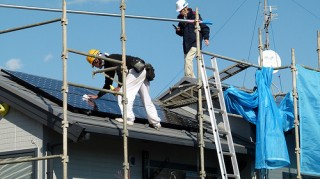In the next decade, over 300 gigawatts of unsubsidized solar energy could be deployed across the United States, generating electricity for the same or less than retail electricity prices. But many utilities remain blissfully unaware of the coming solar storm or how to handle it, as evidenced by a Public Utility Commission hearing in Minnesota last fall.
In October, the Xcel Energy presented their long term planning process (called an Integrated Resource Plan) to the Commission and the public. In their plan, the state’s largest electric utility indicated an interest in adding 20 megawatts (MW) of solar power to their Minnesota system (in comparison to a current statewide capacity of around 13 MW).
If that seems small, consider that ILSR’s recent report on commercial solar grid parity indicates an opportunity to construct 940 MW of commercial rooftop solar at a price (without subsidies) that matches or beats retail electricity prices in Minnesota. The opportunity for residential solar is 2-3 times greater. Combined, 4400 MW of unsubsidized rooftop solar could compete with utility retail prices statewide by 2022.
In other words, Xcel’s plan is remarkable under-estimate of Minnesota’s likely solar market in the next decade, and many other utilities are similarly unaware. I gave the following presentation to a joint meeting of the Federal Energy Regulatory Commission and National Association of Regulatory Utility Commissioners shortly after the Minnesota hearing, and it explores why utilities had better integrate more distributed solar in their resource planning.
It’s not just about preparedness. Like 29 other states, Minnesota is a utility-regulated state. In other words, its privately-owned utilities are a government-sanctioned monopoly with guaranteed customers and a guaranteed profit. Being a public utility means having a public responsibility to the citizens of Minnesota, many of whom will want to take advantage of the chance to generate their own power, cut their electric bills, and keep their energy dollars local.
There are several ways utilities could meet that public responsibility:
- Conduct and publish a study of the solar rooftop potential in their service territory on all public and private buildings, as has been done in San Francisco, Seattle, New York, and many other places.
- Publish an interactive, publicly accessible map of available capacity on the distribution system to help guide local distributed generation into locations most beneficial to the grid (as has been done by all three major investor-owned utilities in California).
- Provide a long-term, but declining incentive for solar power (and other distributed renewable energy) that helps create a stable market for steady growth from today until price parity is reached (like Germany’s feed-in tariff or California’s Solar Incentive).
As a government-sanctioned monopoly, utilities should enable their customers to make energy decisions that reduce their bills, generate clean energy, and keep their energy dollars local. It’s the least they can do for their guaranteed shareholder return, their cooperative members, or their citizens.



